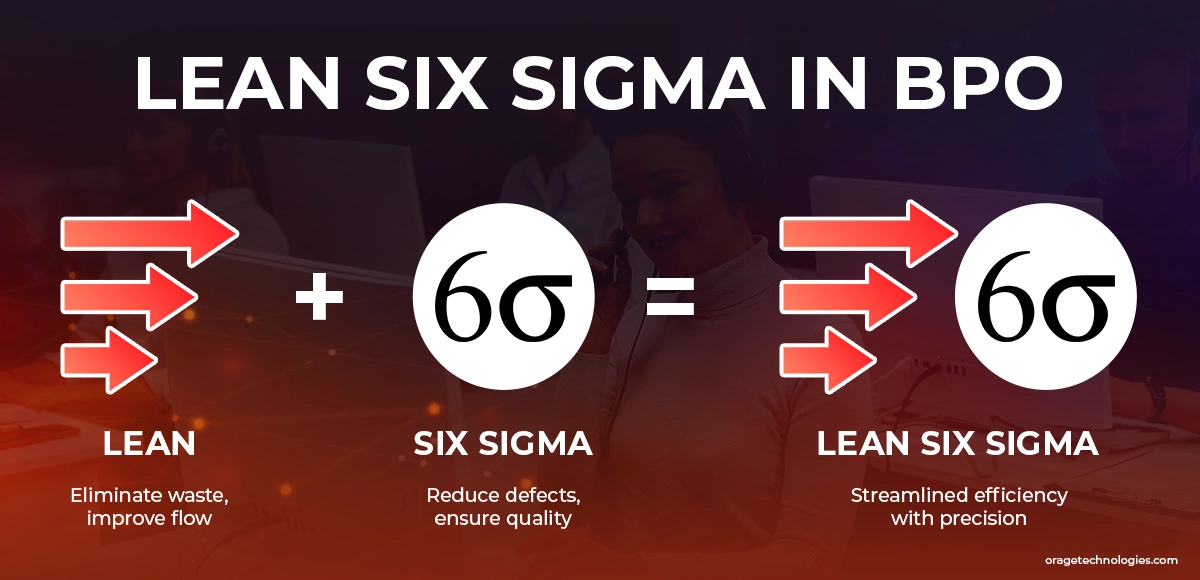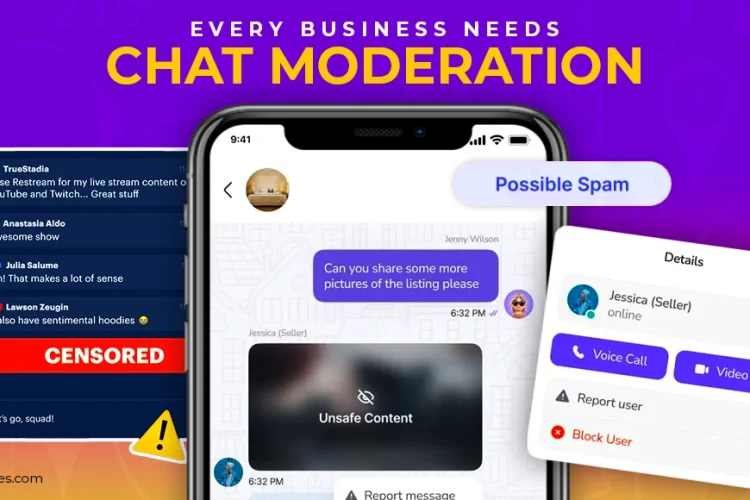
Divya Stuti, with over 5 years of experience in Digital Marketing & Content Writing, has a knack for turning complex Marketing strategies, trends, and jargon...
Do we know how competitive the business environment is? Many businesses struggle on an everyday basis with different issues. They may have complex operations; they may have limited resources, like time and human capital, and so on. The issue can be endless. This is where business process outsourcing (BPO) helps to reduce liability and free up resources. But even BPOs are business entities and they struggle too. This is where Lean Six Sigma in BPO comes in. Lean Six Sigma (LSS) methodology offers powerful tools and strategies to overcome industry challenges to achieve the desired level through business process improvements.
When clients assign a task to a BPO, they demand quality and efficiency. On top of that, they also want no mistakes. In the end, they need to make a relevant return on their investments in terms of process efficiency. It’s all about ROI, right? Business clients always want more than what they invest in anything and BPO is no different. So, when a client outsources a task, they want to make sure the cost of outsourcing is less than the amount required to complete the task in-house. That’s basic math. So, how Lean Six Sigma methodology help BPO?
Let’s see how Lean Six Sigma in BPO works.
What is Six Sigma Methodology?
Now, before getting into Lean Six Sigma, we must be clear about Six Sigma’s meaning. So, what is Six Sigma? Six Sigma is a systematic data-driven methodology to make business processes efficient. It focuses on improving the quality and capability of the processes. How is this achieved? By reducing deviations in the expected results through process control.
You see, every task has a fixed benchmark range. We expect the outcome or results within this benchmark range. If it’s outside the range, there is a problem and the process needs to be fixed. Six Sigma helps improve this by implementing certain measures. For this, it employs both technical and graphical tools.
What is Lean?
Now, what is lean? There is a subtle difference between Lean and Six Sigma, and we need to make sure we get it right. Lean differs from Six Sigma by removing waste through standardization. What does this mean? Well, standardisation, as we know, is the process of achieving uniformity.
And we want exactly this from the process outcomes. Our outcomes need not deviate from the set standard outcome. So, when we establish a standard workflow, there is little scope for waste. Waste is a non-value element, and we don’t want that. Unlike Six Sigma, Lean uses non-technical tools such as visual control systems.
How is Six Sigma beneficial for BPO industry?
Now comes the most important Lean Six Sigma (LSS). LSS is a mix of lean and Six Sigma. LSS combines the positives of both to generate the desired process efficiency. It offers several benefits for the BPO industry. Some of the benefits are listed below:
- Process standardization and optimization
- Quality enhancement programs
- Cost optimization
- Meeting Service Level Agreements (SLAs)
We know that Six Sigma uses process control and Lean uses standardization. LSS employs a structured approach to achieve the process enhancements. This structured approach is known as DMAIC. DMAIC stands for define, measure, analyze, improve and control.
How is Six Sigma implemented?
The Six Sigma implementation process is led by the CEO. The CEO is the one who decides if the BPO needs it or not. Once the decision is taken, it is supported by the middle management. So, the Six Sigma implementation process takes a top-down approach.
What we understand from this is that top management plans and executes the Six Sigma implementation. The middle management oversees the implementation process, and the teams work on it.
Let’s understand with an example. Consider Skylark, BPO requiring process enhancements. Skylark’s CEO decides to implement Six Sigma. The middle management gets in action. They are responsible for its execution. For this, they ensure that management resources are well. Effective resource management is the key here. Furthermore, the managers also make changes to the organization’s barriers. This way, they make it easier to impart desired change.
The classification of the players involved in the Six Sigma implementation is as follows:
- Black Belt (BB) – Project managers having an understanding of the project to direct requisite process improvements
- Green Belt (GB) – Project team
- Master Black Belt (MBB) – Project managers for training and mentoring the BB. MBBs are experienced in training and leading large teams.
Six Sigma Courses and Certifications
Courses
Now, where do we find the courses? Several institutes offer Six Sigma courses. However, CSSC offers the most updated self-study training material. Their courses are also free. So, they are perfect for people who don’t want to spend on learning. If you believe in self-study, go for it. In case you are stuck, they also have helpful links to assist you. You can also reach out to CSSC affiliate training providers and mentors to clear your doubts.
Certification
Sigma Six courses are different from certifications. Courses help gain certification. When it comes to Six Sigma certifications, The Council for Six Sigma Certifications (CSSC) is top-notch and trusted by the industry. There are many others who offer certification with training courses. However, CSSC is quite reputed.
Now, there are two types of certification; primary and advanced certification. Let’s know the details.
Primary Certification
Primary certification is the initial certification and comprises 4 Six Sigma Belts; White, Yellow, Green and Black. So what are belts? Belts are the levels and the color of the belts decides the Six Sigma certification cost. The cost of the belts is shown below.
- White Belt: FREE
- Yellow Belt: $99.00
- Green Belt: $159.00
- Black Belt: $229.00
Advanced Certification
Advanced certification comes after primary certification. Similar to primary certification, advanced certification also has Six Sigma Belts, but the levels differ. One important thing here. For this certification, project completion is mandatory. The color, level and cost of the belts are shown below:
Green Belt Level II: +$300.00
Black Belt Level II: +300.00
Black Belt Level III: +$330.00
Mast Black Belt: +$665.00
Six Sigma Tools
As we know, several graphical and visual tools are involved in Six Sigma and Lean methodology. We can extend this by including qualitative and quantitative tools. So, these statistical and graphical tools are not unique in any way; however, there is a method to use them. These tools are used with the systems, strategically, to extract desired outcomes. Listed below are some of these tools:
Plan-Do-Check-Act (PDCA)- PDCA is a fundamental quality control tool.
Value Stream Mapping (VSM)– VSM is a tool that helps to visualize and analyse the information flow.
Failure Modes and Effects Analysis (FMEA) – FMEA is an effective tool to identify failures in the product and services. Early detection helps early corrective actions.
Kanban– Kanban boards are simple and effective visual tools that help track inefficiencies in processes.
Six Sigma Example
Let’s look at one Six Sigma example of a Lean Six Sigma application. We know LSS is an effective mechanism to increase operational efficiency. MedicEd, faced wait time and staff costs issues. So, MedicEd conducted a Six Sigma DMAIC analysis to arrive at an important decision. They decided to outsource the current in-house process. The results were surprising. They reduced the wait time to 1 minute from 5 minutes and also saved over $1500, 000.
Final Line
Lean Six Sigma in BPO is a powerful methodology that combines the efficiency of Lean with the precision of Six Sigma to enhance process performance, reduce errors, and improve customer satisfaction. By identifying waste and minimizing variations, BPO companies can deliver faster, more reliable services while optimizing resources. As the BPO industry continues to evolve, adopting Lean Six Sigma not only drives operational excellence but also provides a competitive edge in a results-driven market.
Frequently Asked Questions:
1. What is Lean Six Sigma meaning?
Lean Six Sigma is a process improvement method that combines Lean’s waste reduction with Six Sigma’s defect control for higher efficiency and quality.
The 5 steps are DMAIC: Define, Measure, Analyze, Improve, and Control—used to improve processes by eliminating defects and inefficiencies.
The 5 pillars are Customer Focus, Data-Driven Decision Making, Process Improvement, Proactive Management, and Collaboration.
Kaizen is a Japanese principle of continuous, incremental improvement involving everyone in an organization to boost quality and efficiency.
The 3 C’s are Customers, Culture, and Change—focusing on customer needs, building a quality-driven culture, and embracing continuous change.
Also Read: What is Offshore BPO: Benefits and Limitations

Divya Stuti, with over 5 years of experience in Digital Marketing & Content Writing, has a knack for turning complex Marketing strategies, trends, and jargon into interesting and easy to digest blog posts. Whether she’s breaking down the SEO, Social Media or decoding campaigns, Divya knows how to make marketing feel exciting and easy to understand. Armed with a sharp eye for strategy and a storyteller’s instinct, she writes with clarity, creativity, and just the right dose of wit.
More Posts

